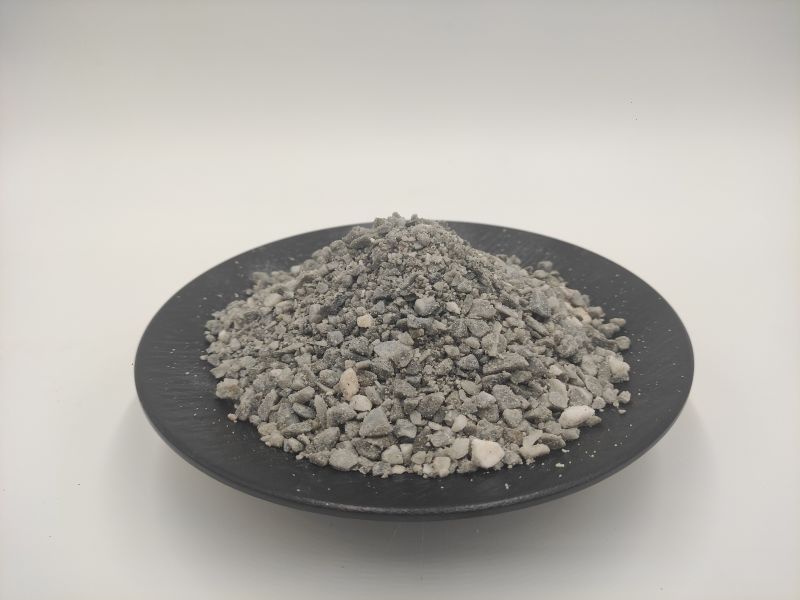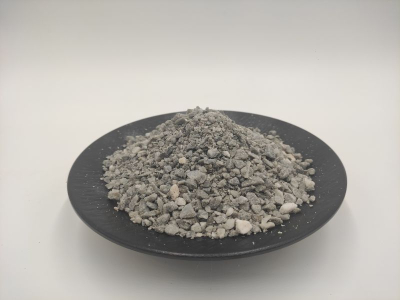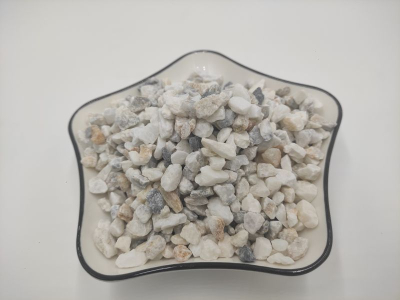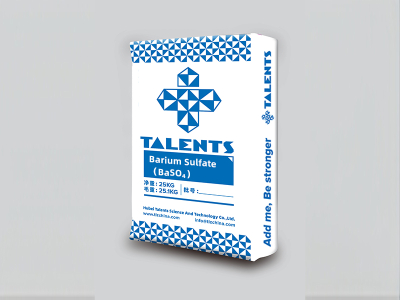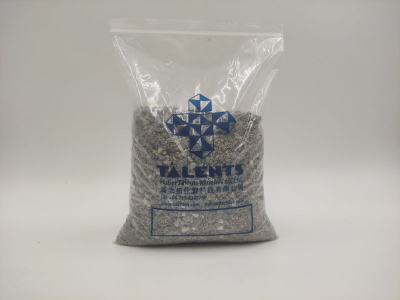Chemical Barite Manufacturing
Drilling grade barite are produced from natural barium sulfate ores.Commonly used as a weighting agent for all types of drilling fluids in oiland gas exploitation. Our drilling barite manufactured to meet or exceed all APl 13 Arequirements. This grade also can be used in the applications which high purity but lowwhiteness requirements.
Product Name: Chemical Barite Manufacturing
Product Abbreviation: Chemical Barite
Supply Capacity:1000MT/PER MONTH
Delivery Time: Within 15 working days after receiving the order confirmation and payment
Product Weight:25KG/
Chemical Barite Manufacturing in China has big advantages. It uses good - quality barite from Barite China to make barite barium sulfate. This product is very pure. It's great for many uses. In the paint industry, it helps make colors cover better. In the medical field, because it's stable, it can be used for X - ray contrast agents.
Index | TLZ-DB01 | TLZ-DB02 |
Appearance | Granule | Granule |
Special gravity ≥ | 4.1 g/cm³ | 4.2 g/cm³ |
BaSO₄+ SrSO₄Content | 85% | 90% |
Hg ppm ≤ | 1 ppm | 1 ppm |
Cd ppm ≤ | 3 ppm | 3 ppm |
As ppm ≤ | 40 ppm | 40 ppm |
Pb ppm ≤ | 1000 ppm | 1000 ppm |
Si0₂Content | - | 3% max |
Fe₂O₃Content | - | 3% max |
Carbonates | 5000ppm max | 5000 ppm max |
Water Soluble Alkaline Earth Metals As Calcium ≤ | 250 mg/kg | 250 mg/kg |
Miosture | 2% | 2% |
Granule Size | 0-100 mm | 0-100 mm |
Our barium sulfate is used in construction, food, pharmaceutical, PVC, personal care and other industries as follows:
1.Pharmaceutical field:
As a contrast agent for X-ray and CT scanning, it can enhance the contrast effect of organs or blood vessels in the body due to its high density and high absorption, helping doctors to make accurate diagnosis.
Used in the treatment of gastrointestinal disorders, such as gastric ulcers and colitis, patients can drink a solution containing barium sulfate and observe the gastrointestinal tract through X-ray examination.
2.Industrial field:
Plastic and rubber: as filler to improve the hardness, abrasion resistance and aging resistance of the products, and at the same time reduce the cost.
Coatings and paints: as white pigment and filler, to increase the thickness, strength and durability of the paint film, and to improve the covering power and gloss of the coating.
Paper making: as filler, improve the whiteness and opacity of paper, improve the smoothness and uniformity of paper.
Ceramics and glass: as raw material to improve the physical properties of products, such as whiteness, density and heat resistance.
Oil and gas: as an aggravating agent for drilling mud to help stabilize well walls and prevent blowouts.
Chemical barite, also known as chemically processed barium sulfate (BaSO₄), is a high-purity mineral used extensively in industrial applications requiring chemical stability, high specific gravity, and low solubility. Unlike crude barite used in oil drilling, chemical-grade barite undergoes advanced refining processes to meet strict purity, particle size, and brightness specifications.
This article offers a complete overview of chemical barite manufacturing, covering the raw materials, engineering processes, quality control standards, regulatory compliance, and practical applications in coatings, plastics, rubber, medical, and chemical industries.
What Is Chemical Barite?
Chemical barite refers to a highly refined form of barium sulfate (BaSO₄) used in industries where high purity and consistency are critical. It is known for its:
High specific gravity (4.2–4.5)
Chemical inertness (resistant to acids and alkalis)
Low oil absorption
Excellent whiteness and opacity
Common Grades:
Precipitated Barium Sulfate (Blanc Fixe): Synthetic, ultra-fine, high-purity
Natural Chemical Barite: Physically processed from selected ore with high BaSO₄ content
Raw Materials and Sourcing
Primary Ore Source: Natural barite ore (BaSO₄ content ≥ 90%)
Secondary Reagents: Sulfuric acid (H₂SO₄), sodium sulfate (Na₂SO₄), barium carbonate (BaCO₃)
Water and Dispersants: Used in slurry processing and precipitation
Chemical Barite Manufacturing Process
1. Ore Beneficiation
Crushing & Grinding: Barite ore is reduced to fine particles (<75 microns)
Flotation or Gravity Separation: Removes impurities like quartz, iron oxides, and carbonates
Washing & Dewatering: Prepares concentrate for chemical treatment
2. Chemical Processing (for Precipitated Barite)
Conversion Reaction:
BaCO₃ + H₂SO₄ → BaSO₄ ↓ + CO₂↑ + H₂O
Reaction conducted under controlled pH and temperature conditions
Precipitation: Barium sulfate precipitates under optimized agitation and residence time
Filtration & Washing: Removes soluble byproducts (e.g., sodium salts, carbonates)
Drying & Milling: Converts wet cake into dry powder; milled to D50 = 0.7–2.5 μm
3. Surface Modification (Optional)
Coated with agents like stearic acid, silicone, or titanates to improve dispersion in polymers or resins
Technical Specifications
| Parameter | Typical Value | Method / Standard |
|---|---|---|
| BaSO₄ Purity | ≥ 98% (precipitated), ≥ 93% (natural) | ASTM D7508 / GB/T 2899 |
| Specific Gravity | 4.2–4.5 | ASTM D854 |
| Whiteness (ISO) | ≥ 94 | ISO 2470 |
| pH Value (10% slurry) | 6.5–8.5 | ISO 787-9 |
| Moisture Content | ≤ 0.2% | ISO 787-2 |
| Oil Absorption | ≤ 10 g/100g | ISO 787-5 |
| Particle Size (D50) | 0.8–2.5 µm | Laser Diffraction (ISO 13320) |
Regulatory and Safety Considerations
| Standard / Regulation | Relevance |
|---|---|
| REACH (EU 1907/2006) | Ensures safe use in the EU; chemical barite is exempt as a mineral |
| RoHS Directive (EU) | Compliant; contains no heavy metals or restricted substances |
| FDA GRAS (21 CFR 73.85) | Precipitated barium sulfate is approved for use in food-contact polymers |
| OSHA / GHS Classification | Not hazardous in solid form; non-toxic and non-reactive |
| ISO 9001 / ISO 14001 | Common certifications held by barite manufacturers |
Applications of Chemical Barite
✅ Paints and Coatings
Used as an extender pigment and functional filler
Enhances gloss, brightness, chemical resistance
Reduces binder demand, lowers cost
✅ Plastics and Rubber
Provides dimensional stability, flame retardancy, and improved acoustic properties
Common in PVC, PE, and thermoplastics
✅ Medical and Pharmaceuticals
Radiocontrast agent in X-ray imaging (e.g., barium meals)
Only high-purity, precipitated BaSO₄ is approved for ingestible use
✅ Battery and Electronics
Filler for resin systems, ceramics, and electrical insulation due to non-conductivity
✅ Paper and Printing
As a coating pigment, improves opacity and printability
Operational and Quality Control Guidelines
Batch Traceability: Essential in medical, food-contact, and export-grade material
Environmental Monitoring: Wastewater must meet local discharge standards for sulfates and pH
Packaging: Typically in 25 kg kraft bags or 1-ton jumbo bags; moisture-proof lining is recommended
Storage: Store in dry, cool environments away from acids and oxidizing agents
Frequently Asked Questions (FAQs)
❓ What’s the difference between drilling-grade and chemical-grade barite?
Drilling-grade barite is used in oil well fluids and may contain impurities. Chemical-grade is refined for high purity and brightness, tailored for industrial and medical use.
❓ Is chemical barite safe for human use?
Yes—precipitated barium sulfate is non-toxic and approved for internal use in medical imaging under strict purity standards.
❓ How does particle size affect performance?
Finer particles (D50 < 1 µm) offer better dispersion, opacity, and smoothness in coatings or polymers but may require additional dispersion agents.
❓ Can barite be modified for hydrophobic applications?
Yes. Surface-treated barite improves compatibility with non-polar systems such as polyolefins or solvent-based coatings.
Summary: Why Chemical Barite Matters
| Feature | Benefit |
|---|---|
| High BaSO₄ Purity | Ensures consistency in chemical, medical, and technical applications |
| Controlled Particle Size | Enables optimized performance in paints, plastics, and films |
| Chemical Inertness | Safe for use in food, pharmaceuticals, and electronics |
| Low Oil Absorption | Enhances dispersion, cost-efficiency, and formulation stability |
| Compliance and Safety | Meets international standards for industrial and health sectors |

